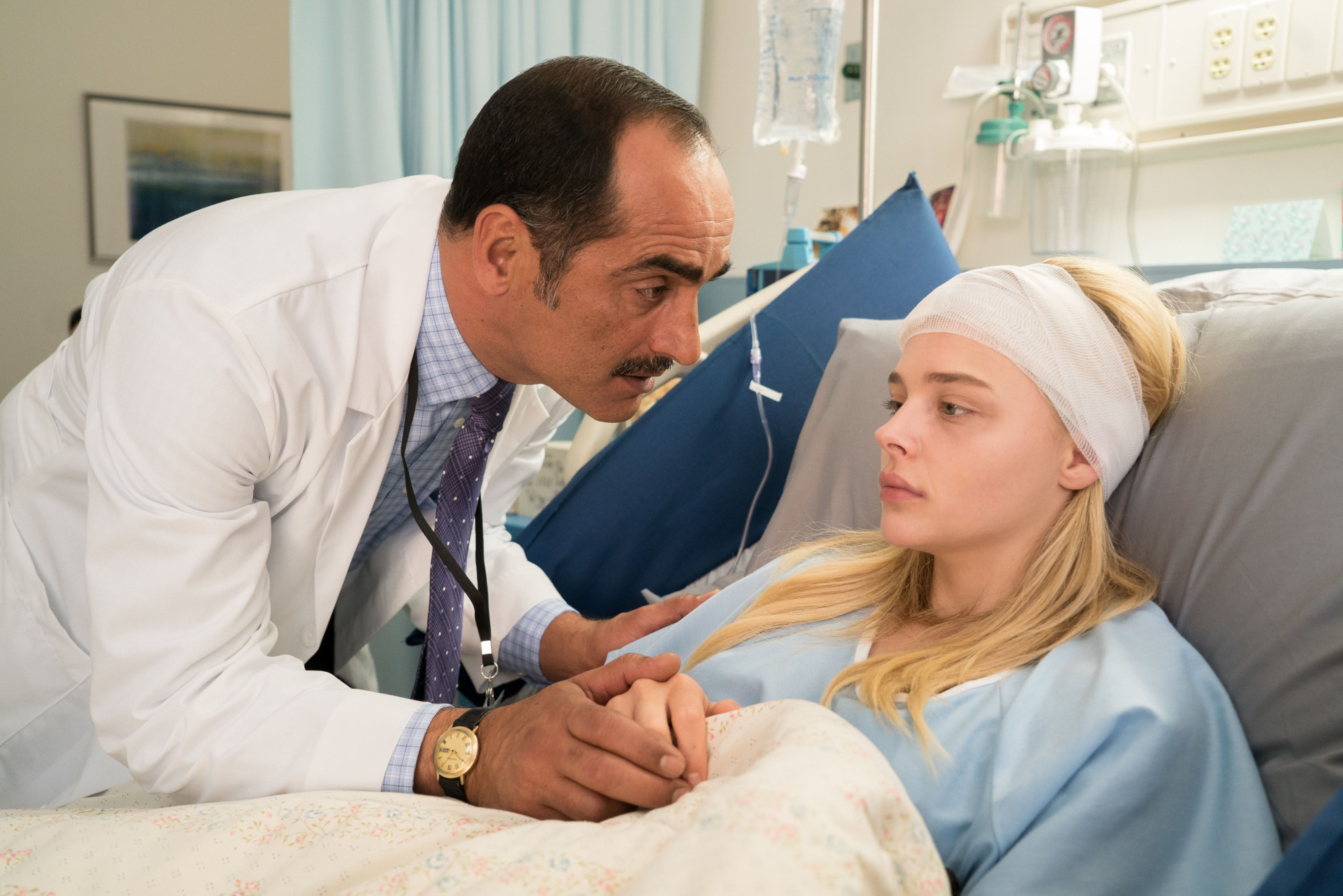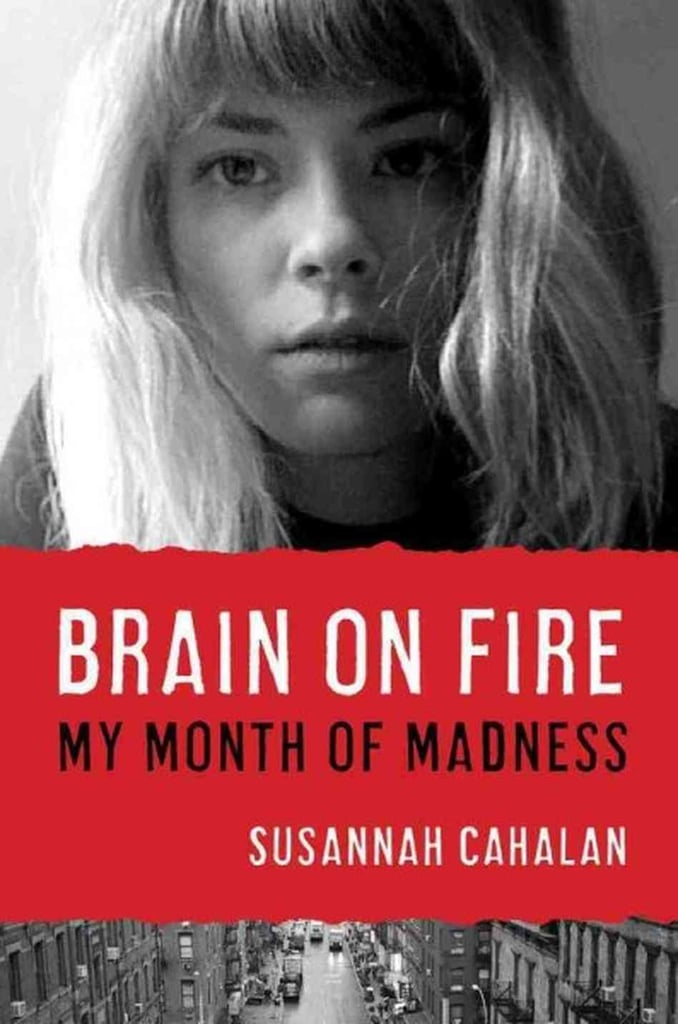
Brain on Fire comes from a place of intense pain and unthinkable isolation, but finds redemption in Cahalan's unflagging, defiant toughness. It's an unexpected gift of a book from one of America's most courageous young journalists.' Susannah Cahalan is an award-winning #1 New York Times bestselling author, journalist, and public speaker. Her 2012 memoir, Brain on Fire has sold over a million copies and was made into a Netflix original movie. Her second book, The Great Pretender, made an array of “Best-Of” lists and was shortlisted for the 2020 Royal Society’s Science Book Award. Painstakingly, Susannah draws a clock with all the numbers on the right side, which indicates that the right side of her brain is inflamed.
Coming to Netflix on Friday is Brain on Fire, a film about a 24-year-old who, armed with a new job and relationship, begins to exhibit odd behavior. Bouts of paranoia, seizures and memory loss plague Susannah Cahalan (Chloe Grace Moretz), while doctors struggle to diagnose her. As nightmarish as this scenario sounds, it's actually based on a true story and subsequent 2013 novel by the real-life Susannah. What condition she had in Brain on Fire isn't discovered until the end of the story, and the path to identifying her medical mystery was one fraught with anxiety and uncertainty.
'Something happened to me that was out of my control, that was something other than me, that took over my life, and robbed me of a good portion of my 24- and 25-year-old self,' Cahalan said in a 2013 interview with The Guardian. After a month in the hospital, on a cycle of various tests that brought more questions than answers, she was diagnosed by Dr. Souhel Najjar with anti-NMDA receptor encephalitis. An autoimmune disease that wages war on one's immune system and the NMDA receptors within the body, encephalitis can affect each person who's diagnosed differently, as Cahalan explained in an interview with Oprah.com.
Susannah Cahalan Brain On Fire Pdf

'NMDA receptors are concentrated in the areas that control learning and memory, higher functions like multitasking, and some of the more subtle aspects of personality. When the immune system makes antibodies that attack these receptors, people may have seizures and violent fits. They might act psychotic and paranoid, like I did, or become hypersexual and lewd. How you respond depends on the area of the brain that's most affected and the number of receptors damaged. '

The disease and its origins has also been tied to 'demonic possession' throughout history. Cahalan herself could identify a connection between her early symptoms and an otherworldly invasion, writing in her book that about her first seizure, “My arms suddenly whipped straight out in front of me, like a mummy, as my eyes rolled back and my body stiffened. I was gasping for air... Blood and foam began to spurt out of my mouth through clenched teeth.”
Anti-NMDA receptor encephalitis is rare, and Cahalan revealed to Oprah.comthat she was only the 217th person in the world to receive treatment for it. In fact, the disease didn't get its name until two years after Cahalan was diagnosed. For her, treatment and a diagnosis came after doctors had performed several inconclusive tests and told her that her condition was the result of alcohol withdrawal or that she might be schizophrenic.
However, Najjar administered a 'Draw a Clock' test, a practice usually reserved for those with Alzheimers or dementia, as Cahalan explained to the Psychiatric Times. She was asked to draw a clock on a piece of paper, except that when she did so, she crammed all of the numbers onto the right side of the circle. According to Cahalan, this confirmed for Najjar that her ailment was not psychiatric, but neurological. She was soon on a path to recovery that involved several immune therapies, steroids and months of adjustment.
After her 2009 diagnosis, Cahalan penned The New York Times best-selling book, Brain on Fire: My Month of Madness. Now adapted into a Netflix movie, Cahalan has, against all medical odds, managed to not only pick up the pieces of her illness but also retain the life developments that occurred just prior to her descent into disease. And today, still a writer at The New York Post, Cahalan is married to her then-boyfriend at the time of the diagnosis, Stephen Grywalksi. She also continues to speak out about her condition at college campuses across the country, shedding light on a complex and fairly young disease.
Netflix's newest original film might be the most terrifying it's ever made, and it's not even a horror movie. Brain on Fire is a medical mystery drama starring Chlöe Grace Moretz, and it's about the very real and extremely rare disorder that struck journalist Susannah Cahalan when she was just 24. The illness depicted on the film is truly the stuff nightmares are made of, but Cahalan made it through and is alive today. So where is the real Susannah from Brain on Fire now, and is she still feeling the effects of her horrific ordeal?
When Cahalan was struck by her illness in 2009, she was one year into her job as a New York Post reporter. Today, nearly a decade later, Cahalan still lives in New York and still works for the Post, having published her most recent article for the paper on June 16, writing about her experience of seeing a harrowing time in her life turned into a movie. But she wasn't just returning to the paper to address her past; she's been consistently writing articles for the Post for years. Just a week earlier, she wrote a piece on Maine lobsters, and her author page on the Post's website shows scores of articles she's written. It's great to see that Cahalan's ordeal didn't end up adversely affecting her career, but it very well could have.
Cahalan suffered from an incredibly rare anti-immune disorder known as anti-NMDA receptor encephalitis. The disease most commonly affects women in their childbearing years, like Cahalan, and is four times more likely to occur in women than in men, according to the Anti-NMDA Foundation. The illness is caused when a person's antibodies, which are produced by the immune system to fight infections, begin attacking the NMDA receptors in the brain. These receptors are responsible for much of the brain's activity, including memory, cognitive function, perception of reality, and even autonomic functions like breathing. It's unknown why these NMDA attacking antibodies are produced, but if left untreated, the disease is fatal. If caught early, however, the condition is highly treatable, which explains why Cahalan is perfectly healthy today.
As for the symptoms experienced by Cahalan, they're quite terrifying, and she can't even remember most of what happened to her due to the nature of her illness. It began with relatively minor symptoms: sensitivity to light and numbness on the left side of her body. Then she broke down crying for no reason at work, and began to worry that something was wrong, according to her own 2009 recounting of the episode in the Post. After seeing a doctor and getting no answers, she had a seizure, which prompted more doctor visits. She then became paranoid and delusional, believing her doctors were conspiring against her and that people on TV were talking about her. She stopped eating, stopped sleeping, and had hallucinations, including believing that her father murdered her stepmother, according to the Post. After being admitted to a hospital, she tried to escape and assaulted her nurses.

Susannah Callahan Brain On Fire
After a number of false diagnoses, including that she was bipolar or suffering from alcohol withdrawal, Cahalan finally received the correct diagnosis from Dr. Souhel Najjar. He asked her to draw a clock on a piece of paper, and when she did, she put all 12 of the numbers on the right side of the clock face, leaving the left side blank, according to NPR. This informed Najjar that the right side of her brain was inflamed, since it controls the left side of the body. He described the condition as her brain being on fire, which Cahalan later used as the title for her memoir about the ordeal that she published in 2012, Brain on Fire: My Month of Madness.
Brain On Fire Real Girl
Today, Cahalan is healthy, though somewhat haunted by what happened to her. She can be considered one of the lucky ones, though. According to the Post, Najjar estimates that 90 percent of anti-NMDA receptor encephalitis cases go undiagnosed, meaning those patients will ultimately be killed by their bodies attacking their own brains. It's a horrifying way to go, but thankfully for Cahalan, she lived to help spread the word about this terrifying disorder so more people can hopefully receive treatment in time.

